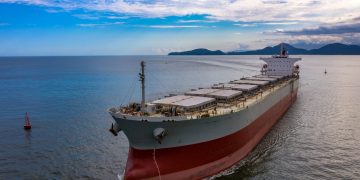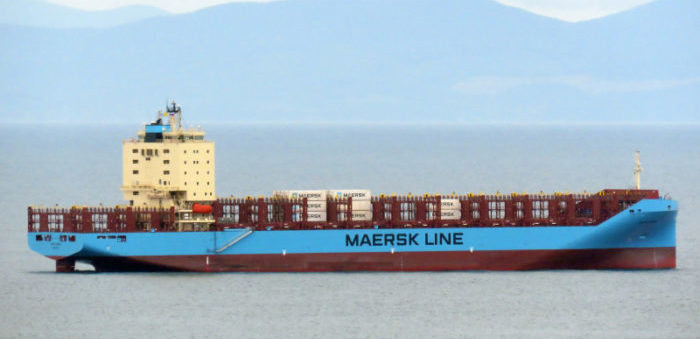Maersk will launch the first ever container ship on an Arctic route. Venta Maersk will leave Vladivostok for St. Petersburg later this week, as melting sea ice offers an alternative route to the Suez Canal.
The ship will carry frozen fish and will travel through the Northern Sea Route until the Bering Strait between Russia and Alaska, before travelling along the Russian north coast ending up to St. Petersburg in September. However, according to sources, the company noted that this is a one-off trial aiming to discover a new route for container ships and to gather scientific data.
In particular, Maersk said that the aim of this trial passae via the NSR is to ‘explore an unknown route for container shipping and to collect scientific data.’
[smlsubform prepend=”GET THE SAFETY4SEA IN YOUR INBOX!” showname=false emailtxt=”” emailholder=”Enter your email address” showsubmit=true submittxt=”Submit” jsthanks=false thankyou=”Thank you for subscribing to our mailing list”]
At first Maersk showed its interest in sending a container ship along the Northern Sea Route during a meeting with Russian officials in November 2017. The company received a permit to sail through the route by the Russian NSR Administration on July 23rd, permitting the vessel to sail in a westward direction on the route between September 1st – 20th.
This journey could also be an attempt by Maersk to antagonize its Chinese rival COSCO which has increased activity on the route over the past three years. Namely, during 2017 COSCO sent a dozen vessels through the Arctic, including five transit voyages.
The fact is that there is more traffic in this route lately as during summer the ice decreases. In fact, oil and gas cargoes are making the journey, as choosing the Northern Sea Route, journey times between Asia and Europe can be reduced by up to two weeks.
Namely in July, Russian natural gas producers Novatek informed that it shipped its first cargo of LNG from the Yamal LNG project to China via the Northern Sea Route. The voyage time from the port of Sabetta through the Northern Sea Route to the destination port was completed in 19 days as compared to 35 days for the traditional eastern route via the Suez Canal and the Strait of Malacca.
In addition, Christophe de Margerie, the icebreaking LNG carrier owned and operated by Russian Sovcomflot (SCF Group), has crossed the Northern Sea Route (NSR) in a new record time for a merchant ship without icebreaker support, during July.
Nevertheless, this reveals a downside. Due to global warming Arctic sea ice hit a record low for January, while ice in the Bering Sea reported its lowest levels in recorded history.
In the same wavelength the Clean Arctic Alliance challenged Maersk to come clean on what fuel the ‘Venta Maersk’ will use when crossing Arctic waters.
Namely, in April 2018, IMO’s Marine Environment Protection Committee agreed to move forward on consideration of a Arctic ban on heavy fuel oil. The meeting directed a sub-committee (PPR6) to develop a ban on heavy fuel oil use and carriage for use by ships in the Arctic.
With this week’s news that the Arctic’s strongest sea ice has broken up twice this year, for the first time on record, using heavy fuel oil to power shipping in the Arctic not only increases the risk of oil spills, but also generates emissions of black carbon, which exacerbate the melting of both sea and glacier ice in the Arctic region. By taking the lead in the Arctic, Maersk could lead a vanguard of companies shipping commercial goods that move towards clean and renewable forms of propulsion for shipping worldwide.

































































